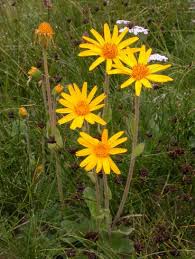Bruising after certain elective facial procedures is very common and expected. While well tolerated by patients, given that they have no choice, any reduction of its extent and duration would be appreciated. Rhinoplasty is one of those facial procedures that is well known to cause considerable bruising when osteotomies (breaking of the nasal bones) are done as part of the nasal reshaping. It creates the classic ‘raccoon eyes’ as the blood released by the cut nasal bones tracks along the lower eyelids/cheek tissue junction.
In the May 2016 issue of the Annals of Plastic Surgery, a paper was published entitled ‘Perioperative Arnica Montana for Reduction of Ecchymosis in Rhinoplasty Surgery’. In this paper thirteen patients who had rhinoplasty surgery with nasal bone osteotomies were prospectively randomized to receive either oral perioperative Arnica Montana or a placebo in a double-blinded fashion. Ecchymosis (bruising) was measured in digital photographs at three after surgery time points as well as its extent based on color assessment. Nine patients taking Arnica Montana had less bruising on days 2, 7 and 10 by 16%, 33% and 20% respectively compared to the control patients.
The authors conclude that Arnica Montana seems to accelerate postoperative healing, with quicker resolution of the extent and the intensity of ecchymosis after osteotomies in rhinoplasty surgery, which may dramatically affect patient satisfaction.

How does Arnica Montana potentially work in reducing and clearing bruising? The active ingredients of Arnica are sesquiterpene lactones, such as helenalin and 11,13- dihydrohelenaline and chamissonolid. These two sesquiterpene lactones have been shown to inhibit collagen-induced platelet aggregation and thromboxane formation. By having an effect on platelet aggregation, less bruising theoretcically occurs and clot/bruisinhg may be cleared faster.
Dr. Barry Eppley
Indianapolis, Indiana


